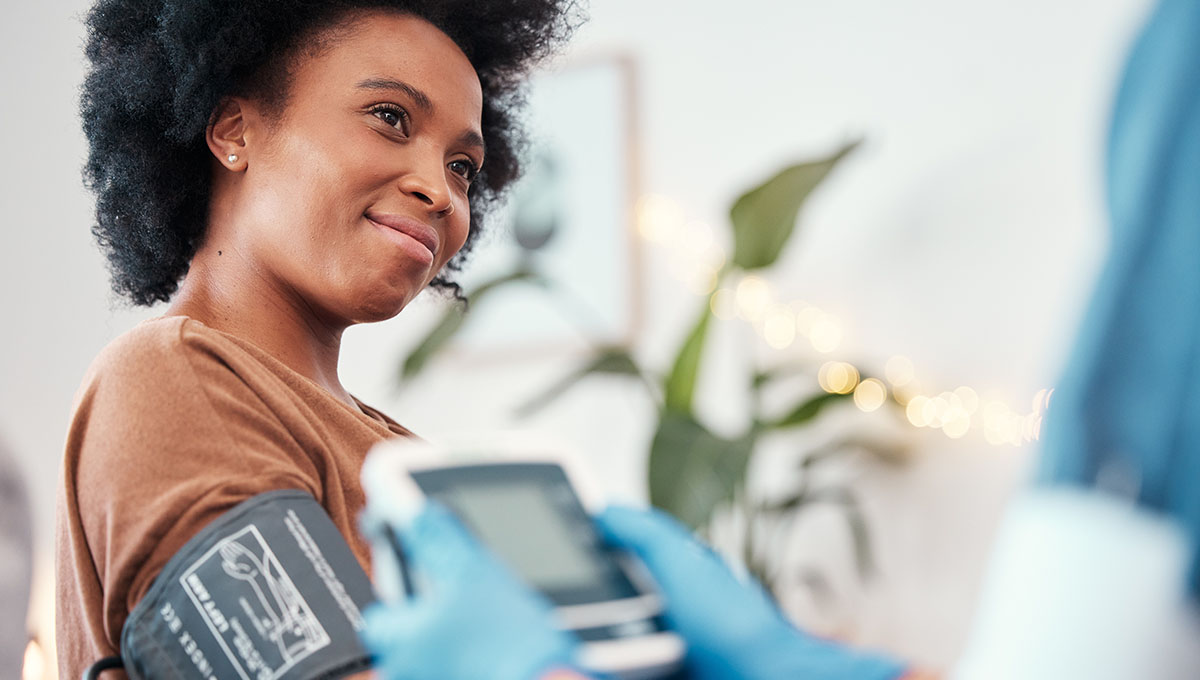Patients whose hypertension diagnosis is delayed are less likely to get the drugs they need and face higher CV risks over the years.
Approximately one in seven patients with hypertension don’t receive a prompt diagnosis, and with such delays, these individuals are less likely to initiate treatment for their high blood pressure and are more vulnerable to experiencing an adverse CV outcome over the next 5 years, new research suggests.
It’s not that clinicians are intentionally disregarding hypertension, John E. Brush Jr, MD (Sentara Health, Virginia Beach, VA), one of the lead researchers, told TCTMD. Possible drivers of their results instead include the fragmented nature of healthcare in the United States, as well as information overload.
“In practice, you might get a blood pressure that’s measured in the primary care office and you might get another one that’s measured a month or two later in someone else’s office,” noted Brush. “It’s not that easy for a practitioner who’s busy and trying to just get through the day to make the connection.” This is where electronic health records (EHR), the source of data for the current analysis, might be of assistance, by helping “physicians put two and two together,” he added.
Delayed diagnoses have fairly immediate effects, Brush pointed out. “It’s not like it’s 30 years later you have a problem,” he said. “No, it’s in a relatively short period of time.”
Patients in the study whose diagnoses came more than a year late had a 30% higher chance of experiencing a CV event within 5 years. “Treating somebody’s high blood pressure is important—everyone knows that—but it’s also important to get started on treating it right away. Don’t delay,” Brush stressed.
The Longer the Delay, the Worse the Impact
For the study published this week in JAMA Network Open, which included first author Yuan Lu, ScD (Yale New Haven Hospital, CT), the group analyzed data from EHR for 311,743 adults with at least two outpatient BP readings ≥ 140/90 mm Hg that were recorded at least 30 days apart between 2010 and 2021. All were treated through a large nonprofit integrated healthcare system with 12 hospitals, 566 outpatient sites, and over 1,300 clinicians in Virginia and North Carolina.
Within this cohort, 14.6% of patients were diagnosed with hypertension after their second BP elevation. Their mean age was 57.9 years, 53.3% were women, and 69.6% were non-Hispanic white (24.9% were non-Hispanic Black, 2.4% Hispanic or Latino, and 1.7% non-Hispanic Asian).
Get started on treating it right away. Don’t delay. John E. Brush Jr
Lu et al took several steps to overcome bias in their observational analysis—in clinical encounters with multiple readings, for example, they only counted the last measurement as a precaution against “white coat hypertension.” They also adjusted for factors such as age, sex, race/ethnicity, comorbidities, and baseline BP.
Patients who received a hypertension diagnosis only after two measurements, compared with after the first test, were less likely to be prescribed antihypertensive drugs within 30 days of the diagnosis (30.6% vs 75.2%; P < 0.001). Treatment rates became progressively lower with lengthier delays.
With a delayed diagnosis, patients also faced a greater risk of cardiovascular events (hospitalization for acute MI, hospitalization for heart failure, and clinically diagnosed ischemic stroke during an inpatient or emergency department visit). The impact was larger when delays were longer, and the associations were most pronounced for heart failure hospitalization.
Patients Diagnosed With Hypertension After Two BP Elevations
|
Length of Delay |
Prescribed Antihypertensives |
5-Year CV Event Risk (HR; 95% CI) |
|
0-90 Days |
54.5% |
1.04 (0.95-1.13) |
|
91-365 Days |
32.4% |
1.11 (1.04-1.19) |
|
> 365 Days |
26.4% |
1.29 (1.23-1.36) |
Longer delays were more common in younger compared with older patients, women compared with men, and Asian or Black patients compared with white. These demographic differences in diagnosis point to the possibility of “implicit bias, differences in symptom presentation, or variability in clinician-patient interactions,” according to researchers.
The findings suggest that “missed clinical opportunities” are at the root of the delays, not “patient disengagement from care,” they say. For example, those with a delayed diagnosis had a similar number of outpatient and primary care visits before the second elevated BP reading as those who were diagnosed earlier. These patients also continued to interact with the healthcare system after the second reading, with a longer diagnostic delay linked to more outpatient and doctor’s visits.
Patients, and sometimes clinicians, want to first try lifestyle changes to address hypertension, though “that hardly ever works,” said Brush. Patients also may be concerned that acknowledging the disease could impact other areas of life, such as their ability to buy life insurance.
While it may be valid to take some time to be sure BP measurements are consistent and accurate enough to reach a diagnosis, the study shows that waiting too long to act can have consequences for patients, he emphasized.
The investigators propose several ways to hasten diagnosis, such as EHR-decision support tools as well as expanded roles for nonphysicians.
“Pharmacists, as integral members of team-based care models, can contribute significantly to BP screening, medication initiation and titration, follow-up monitoring, and patient education, especially in outpatient and community settings,” they suggest. “Similarly, nurses can contribute to BP rechecks, patient education, and referral for confirmatory testing.”
Embedding these efforts into primary care practices could help encourage a team approach and distribute the workload, they note.
